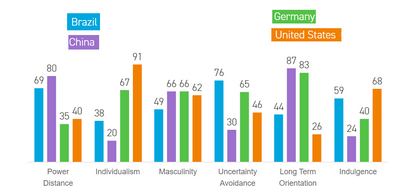I feel like every time someone is asked to explain the difference between Sunni and Shia, people give the same incredibly unsatisfying answer about the schism arising from a disagreement about who Mohammed's designated successor was.
No one ever seems to answer with the thing that people actually want to know, which is "What are the differences between these two groups *today*?" I'm not even sure I know the high points of the differences.
@zebrask It seems like the most resonant way to draw the Cath/Prot distinction -- in the modern day, for practical purposes -- is to point to the cultural-ethnic geography:
Prots carved off lots of northern/Germanic cultures, and so have a lot of ethnic norms you'd find there (in Hofstede's dimensions, those include higher individualism and lower power distance).
By contrast, Caths kept lots of southern/Med cultures (collectivism, high power distance).
https://en.m.wikipedia.org/wiki/Hofstede%27s_cultural_dimensions_theory


@zebrask so by analogy, you could do something similar for Sunni/Shia. Start with geography, then go to culture, then draw cultural comparisons across established dimensions.